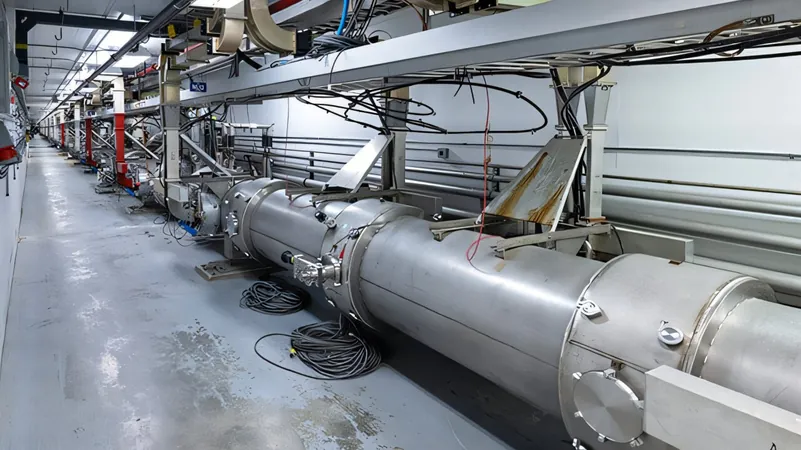
Unlocking the Secrets of the Universe: The Continuous Electron Beam Accelerator Facility Gets a Major Overhaul
2024-11-26
Author: Ming
A Journey Through Time
The inception of CEBAF can be traced back to August 1983 when Congress allocated funds for its research, development, and design. The facility's primary objective was to deliver high-energy electron beams for nuclear physics experiments. Once accelerated, the particles can reach energies of up to 4 billion electron volts (4 GeV), enabling scientists to probe the intricate structures of protons and neutrons—the fundamental building blocks of ordinary matter.
Construction Milestones and Experiments
By December 1993, CEBAF was completed and began operations, quickly cementing its status as a revolutionary tool for scientific inquiry. As data collection for nuclear experiments began in 1995, researchers had access to three fully operational experimental halls (Halls A, B, and C) within just two years, showcasing the accelerator's stellar performance.
The $338 Million Upgrade and the Future of Nuclear Physics
In response to the burgeoning demands for more advanced nuclear physics research, the DOE approved a significant $338 million upgrade project in 2004. The ambitious 12 GeV CEBAF Upgrade Project not only expanded the accelerator's energy capabilities but also introduced a new experimental area, Experimental Hall D. Following a five-year extensive upgrade process completed in 2017, CEBAF emerged more powerful and refined than ever.
Future Prospects
The new paper doesn’t merely rest on the laurels of past accomplishments. It opens the door to future advancements, contemplating the integration of machine learning, new photon source developments, and outlines several prospective nuclear physics projects.




 Brasil (PT)
Brasil (PT)
 Canada (EN)
Canada (EN)
 Chile (ES)
Chile (ES)
 España (ES)
España (ES)
 France (FR)
France (FR)
 Hong Kong (EN)
Hong Kong (EN)
 Italia (IT)
Italia (IT)
 日本 (JA)
日本 (JA)
 Magyarország (HU)
Magyarország (HU)
 Norge (NO)
Norge (NO)
 Polska (PL)
Polska (PL)
 Schweiz (DE)
Schweiz (DE)
 Singapore (EN)
Singapore (EN)
 Sverige (SV)
Sverige (SV)
 Suomi (FI)
Suomi (FI)
 Türkiye (TR)
Türkiye (TR)